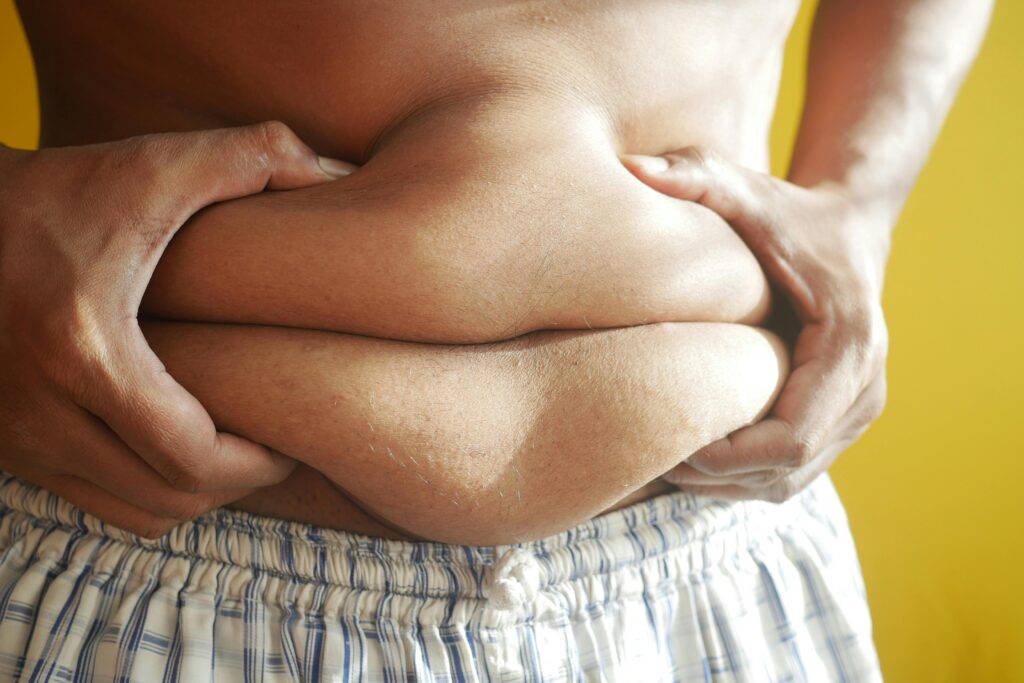Unveiling the Truth Behind the Beer Belly: Causes and Prevention Strategies
A “beer belly” is a colloquial term often used to describe an increase in abdominal fat, particularly in men. Despite its name, the causes of a beer belly are multifaceted and involve more than just beer consumption. In this blog, we will explore the various factors contributing to the development of a beer belly and provide insights into how to prevent and manage it.

The Role of Beer and Alcohol Consumption
Calories in Alcohol
Beer, like many alcoholic beverages, contains a significant number of calories. A typical pint of beer can have anywhere from 150 to 200 calories. These calories are often referred to as “empty calories” because they provide energy but little nutritional value.
Increased Appetite and Poor Food Choices
Alcohol consumption can stimulate appetite and impair judgment, leading to overeating and poor food choices. This combination can contribute to an increase in calorie intake and, consequently, weight gain.
Metabolism Disruption
Alcohol can interfere with the body’s metabolism. The liver prioritizes metabolizing alcohol over other nutrients, which can result in the storage of excess calories as fat, particularly in the abdominal area.
Diet and Nutritional Habits
High-Calorie Foods
Consumption of high-calorie foods, often paired with drinking, plays a significant role in developing a beer belly. Foods high in fats, sugars, and refined carbs are particularly problematic, as they contribute to increased fat storage.
Irregular Eating Patterns
Irregular eating patterns and late-night snacking, which can be associated with drinking, further exacerbate the issue. The body’s metabolism slows down at night, making it more likely for calories to be stored as fat.
Sedentary Lifestyle
A sedentary lifestyle is a significant contributor to the development of a beer belly. Regular physical activity is essential for maintaining a healthy weight and preventing the accumulation of abdominal fat.
Muscle Loss
As people age, muscle mass tends to decrease, especially if physical activity is not maintained. This muscle loss can slow down metabolism, making it easier to gain fat in the abdominal region.
Hormonal Factors
Testosterone Levels
In men, lower levels of testosterone can lead to increased fat storage, particularly around the abdomen. This hormonal change is often a natural part of aging but can be exacerbated by poor lifestyle choices.
Cortisol and Stress
High stress levels can lead to elevated cortisol, a hormone that encourages fat storage, especially in the abdominal area. Chronic stress can therefore contribute significantly to the development of a beer belly.

Genetics
Genetic Predisposition
Genetics also play a role in body fat distribution. Some individuals are genetically predisposed to store more fat in the abdominal area, making them more susceptible to developing a beer belly.
Family Lifestyle Habits
Family lifestyle habits, including diet and physical activity levels, can also influence an individual’s tendency to develop a beer belly. Shared family habits can perpetuate patterns that contribute to abdominal fat.
Prevention and Management
Healthy Eating
Adopting a balanced diet rich in fruits, vegetables, lean proteins, and whole grains can help prevent the accumulation of abdominal fat. Avoiding excessive alcohol and high-calorie foods is crucial.
Regular Exercise
Incorporating both cardiovascular exercises and strength training into your routine can help burn calories and build muscle, which in turn boosts metabolism and reduces abdominal fat.
Stress Management
Practicing stress-reduction techniques such as yoga, meditation, and deep breathing exercises can help lower cortisol levels and prevent stress-related fat storage.
Monitor Alcohol Intake
Limiting alcohol consumption and opting for lower-calorie alcoholic beverages can help manage calorie intake and reduce the risk of developing a beer belly
Conclusion
While beer and alcohol consumption are commonly associated with the development of a beer belly, it is important to recognize that multiple factors contribute to abdominal fat accumulation. By understanding the roles of diet, lifestyle, hormones, and genetics, individuals can take proactive steps to prevent and manage a beer belly. Maintaining a healthy diet, staying active, managing stress, and monitoring alcohol intake are key strategies for achieving and maintaining a healthy waistline.
